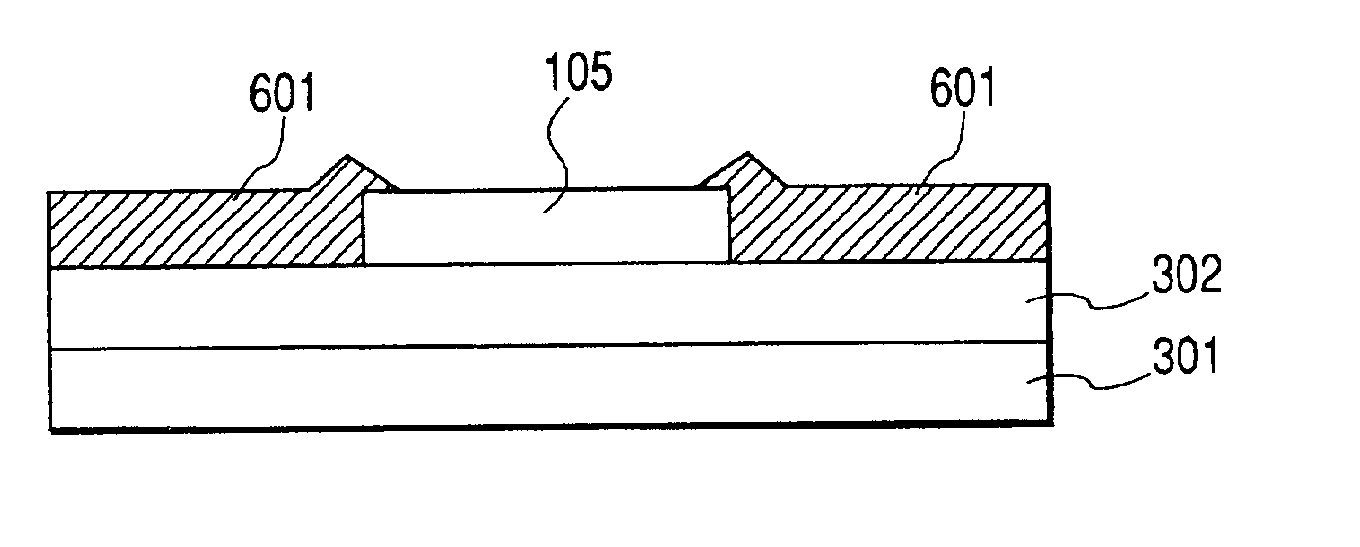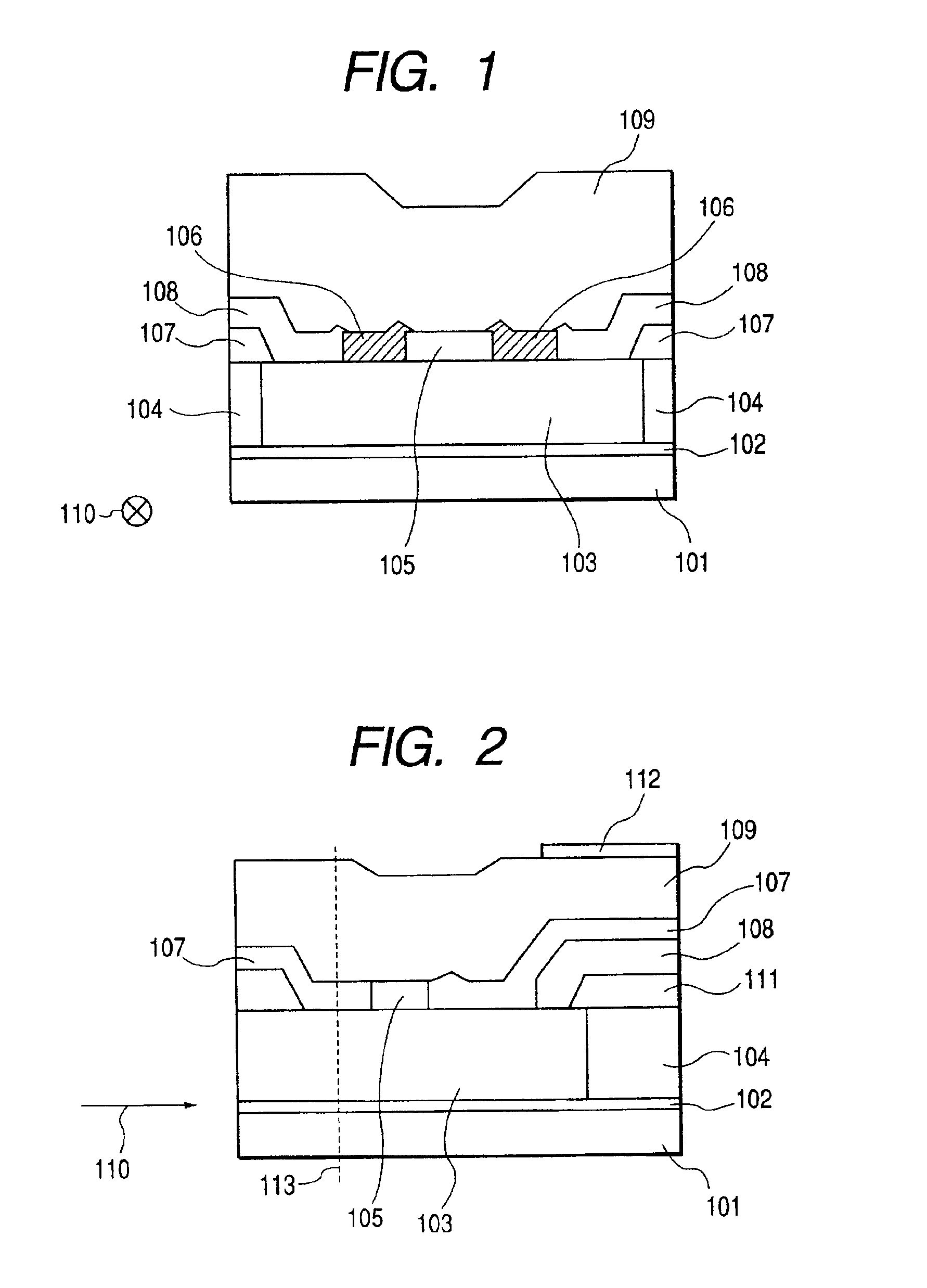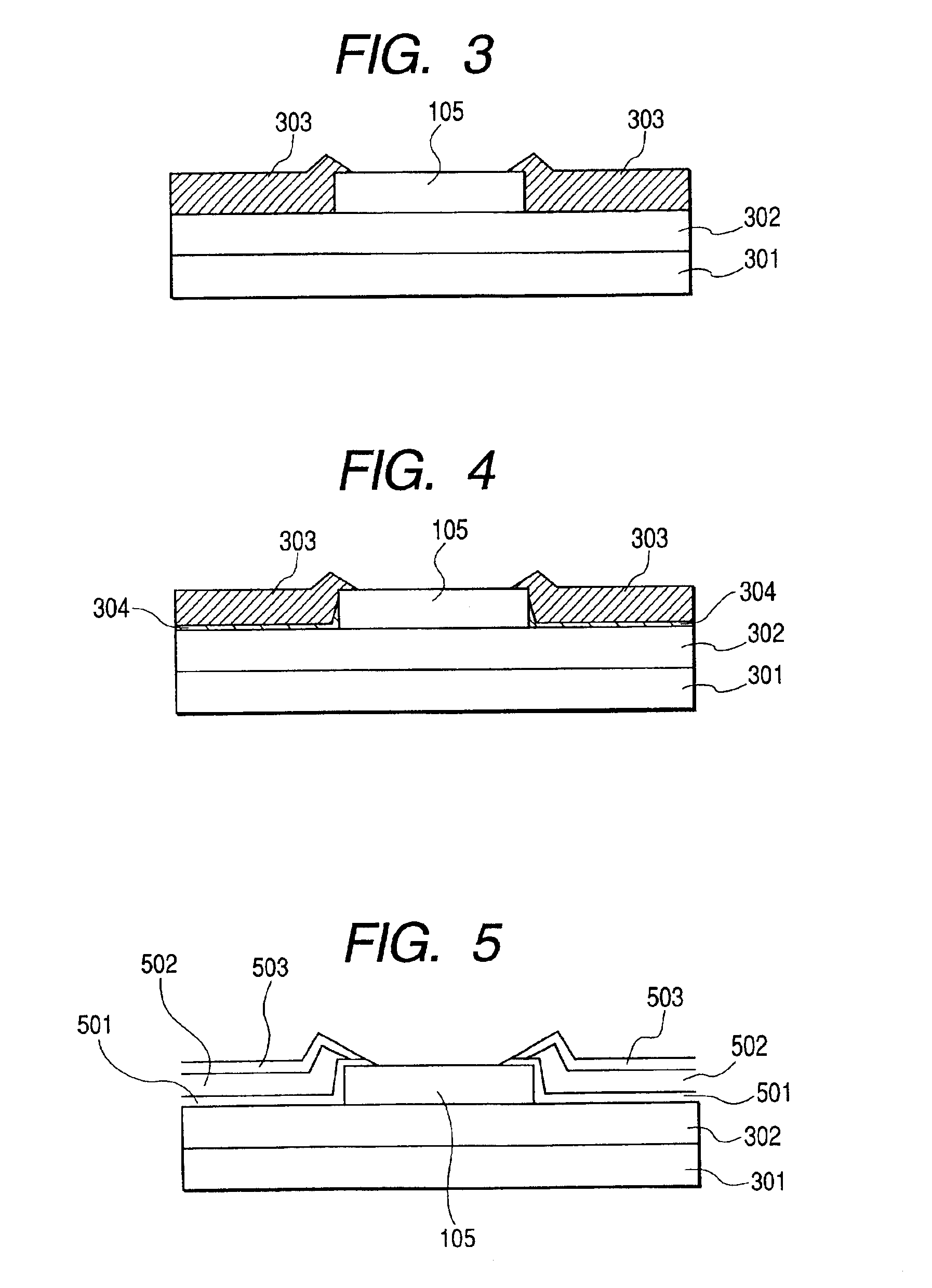Magnetoresistive sensor including magnetic domain control layers having high electric resistivity
a magnetic domain control and magnetoresistive sensor technology, applied in nanoinformatics, instruments, record information storage, etc., can solve the problems of high loss of s/n of read sensor, difficult to ensure the insulating properties of the magnetic domain control layer, and difficult to provide a sufficient recording magnetic field for read elements, etc., to improve the reproducing resolution of the magnetoresistive sensor. , the effect of high electric resistivity
- Summary
- Abstract
- Description
- Claims
- Application Information
AI Technical Summary
Benefits of technology
Problems solved by technology
Method used
Image
Examples
example 1
FIGS. 1 and 2 are diagrams showing the structure of a magnetoresistive sensor as one embodiment according to the present invention viewed from the media-opposed surface and section of the plane perpendicular to the depth direction, respectively. Arrow 110 in the drawing denotes the depth direction.
On a substrate 101 is formed a base insulating layer 102, made of, for example, alumina. After subjected to precision polishing by means of chemimechanical polishing (CMP), a lower magnetic shield layer 103 is formed thereon. This is made of Ni8lFe19 having a thickness of 2 μm manufactured by, for example, the sputtering method, the ion beam sputtering method, or the plating method. A resist mask is patterned in a predetermined size in this layer, and other portions thereof are subjected to ion milling to strip off the resist. Al2O3 is grown thereon to fill in portions 104 removed by ion milling. After this is subjected to CMP, an electrode layer made of Cu or Ru (not shown) is grown by 20...
example 2
The magnetoresistive sensor in Example (1) described above has the structure by lamination from the lower portion. The structure in which the upper and lower portions are reversed can also give the same effect.
example 3
In Example (1) described above, in formation of the magnetic domain control layer using a spinel type oxide such as γ-Fe2O3, on the underlayer 304 of the magnetic domain control layer 303, is formed, in place of the CoO layer, an oxide layer having a crystal structure of NaCl type such as Mg (200), NiO (200), EuO (200), FeO (200) or ZnO (200) as well as a (200) plane. Then, the spinel ferrite formed thereon can be crystallized at low temperature. As a method of forming this layer, there is a method of manufacturing these layers by the sputtering method, the ion beam sputtering method or the cluster ion beam method. As a method other than this, on the lower shied 302 a layer of Co, Mg, Ni, Eu, Fe or Zn is formed in a thickness of 1-5 nm. This layer is exposed to oxygen in vacuum, is irradiated with oxygen using ECR plasma, or is exposed to low-pressure oxygen by heating the substrate (100 to 250° C.) so as to form an oxide layer, thereby forming a spinel ferrite thereon. This method ...
PUM
| Property | Measurement | Unit |
|---|---|---|
| temperature | aaaaa | aaaaa |
| thickness | aaaaa | aaaaa |
| thickness | aaaaa | aaaaa |
Abstract
Description
Claims
Application Information
 Login to View More
Login to View More - R&D
- Intellectual Property
- Life Sciences
- Materials
- Tech Scout
- Unparalleled Data Quality
- Higher Quality Content
- 60% Fewer Hallucinations
Browse by: Latest US Patents, China's latest patents, Technical Efficacy Thesaurus, Application Domain, Technology Topic, Popular Technical Reports.
© 2025 PatSnap. All rights reserved.Legal|Privacy policy|Modern Slavery Act Transparency Statement|Sitemap|About US| Contact US: help@patsnap.com



